Who Buys the Bride a Garter? Understanding Wedding Traditions and Etiquette
When planning a wedding, one of the enduring traditions you might consider is the inclusion of a wedding garter. This small piece of bridal attire has a history rooted in superstition and was once believed to bring good luck and ward off evil spirits. Today, it’s typically seen as a symbol of the bride’s love and commitment, and adds a touch of whimsy to the wedding festivities.
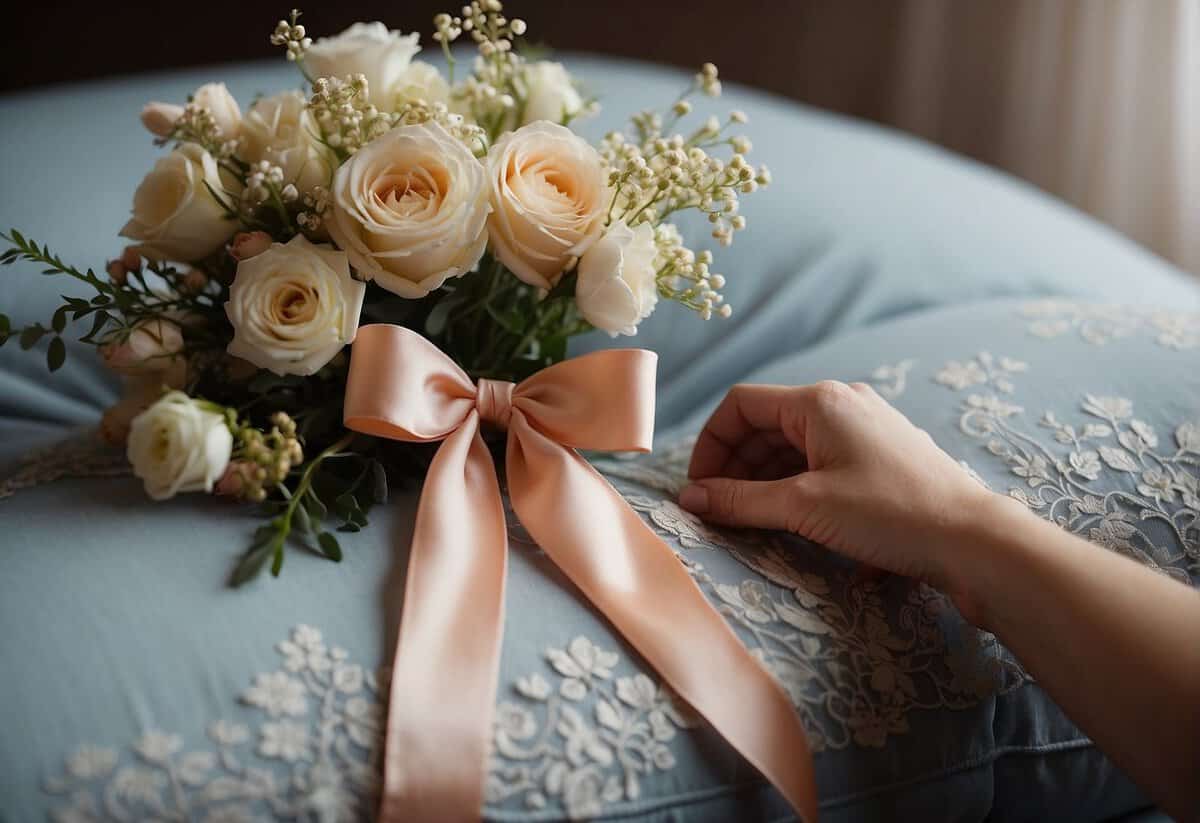
Determining who should buy the bride’s garter can stir up a bit of confusion, given the variations in wedding customs. Traditionally, this accessory might be selected by the bride herself, signifying a personal treat or a special keepsake of her wedding day. However, it can also be gifted by someone close to her, like a family member or a friend, as a token of support and affection. As with many wedding decisions, the choice remains a highly personal one, reflecting the unique dynamics and relationships of those involved in the ceremony.
Key Takeaways
- The wedding garter is a tradition steeped in history, symbolizing the bride’s love.
- The bride often selects her own garter, but it can also be a heartfelt gift.
- Customary practices have evolved, allowing flexibility in who might purchase the garter.
The Origin and Significance of the Wedding Garter
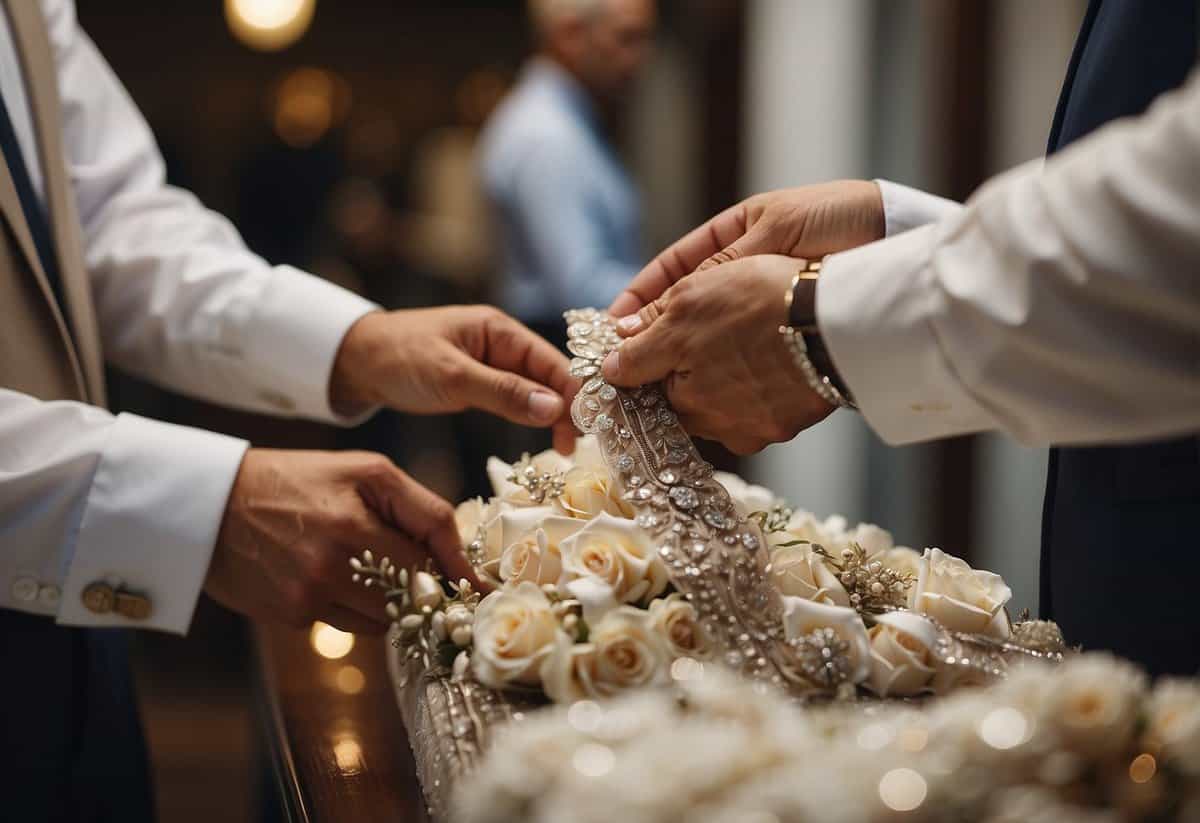
Exploring the wedding garter tradition reveals a rich tapestry of history and symbolism that continues to charm and entertain at modern ceremonies. Let’s unveil the story behind this age-old custom and what it signifies today.
History of the Garter Tradition
The wedding garter tradition dates back to the Middle Ages, a time when pieces of the bride’s attire were considered to bring good luck. This belief often led to wedding guests vying to obtain a piece of the bride’s dress, sometimes to the point of chaos. To avoid their garments being torn, brides began tossing a garter to the crowd, thus giving rise to the garter toss ritual.
Symbolism in Modern Times
Today, the symbolism of a wedding garter is less about luck and more a nod to the tradition itself. It represents love, affection, and the continuity of marital traditions. In addition to being a symbol of the past, it adds a playful element to the celebration and is often woven into the wedding as a cherished wedding tradition.
The Garter Toss Ritual
The garter toss tradition has survived as a lighthearted, sometimes flirtatious, part of the wedding reception, where the person who catches the garter is said to be the next in line for good luck or even marriage. Throwing the garter is linked to throwing the bouquet and has become a symbol of passing on good fortune in marriage to others.
Who Purchases the Bride’s Garter?
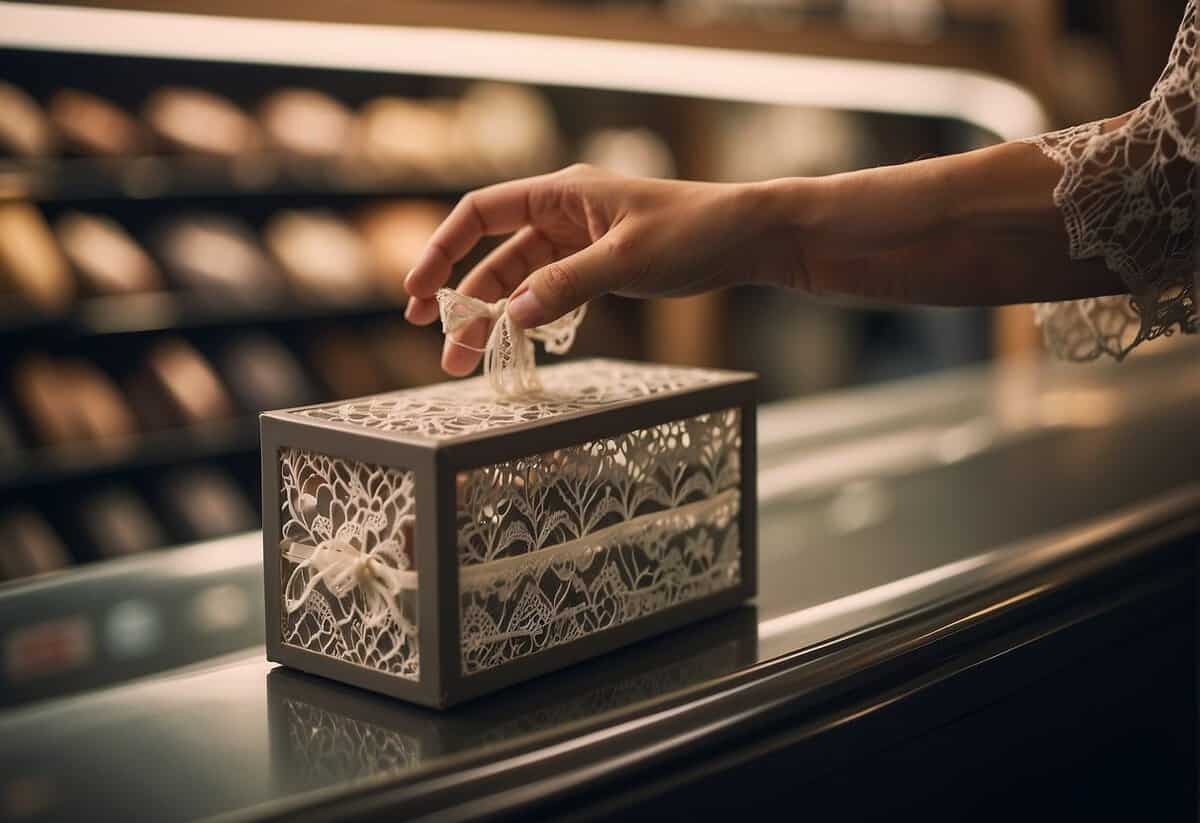
When it comes to the bride’s garter, tradition blends with personal preference. Whether the garter is intended as a gift or a personal purchase, it symbolizes a connection to romance and matrimonial ceremonies.
Common Purchasers
- Bride Herself: It’s not unusual for you to purchase your own bridal garter. This choice allows for personal expression and ensures the garter fits your unique style and comfort.
- Close Family or Friends: A bridesmaid or a relative may choose to gift the garter at a bridal shower, offering a touch of entertainment and a symbolic gesture of their connection to you.
Gifting Etiquette
- Personal Choice: While there are no strict rules, gifting a garter can be a thoughtful gesture from someone close to you. If someone asks about gifting, feel free to express if you have any preferences or themes in mind.
- Surprise Element: If the garter is a gift, it’s often chosen to surprise you and add a bit of excitement to the preparations or bridal shower festivities.
Considerations for Personal Choice
- Romantic Significance: You might want a garter that holds sentimental value, perhaps something that matches the wedding theme or includes something borrowed or blue.
- Fit and Comfort: Ensure that the garter is comfortable to wear throughout the day, keeping in mind the fit under your wedding dress.
Remember, the purchase of a bride’s garter is a charming and unique aspect of wedding planning, and whether it’s a gift from someone special or a personal choice, it’s a sweet addition to your wedding day narrative.
Selecting the Perfect Garter
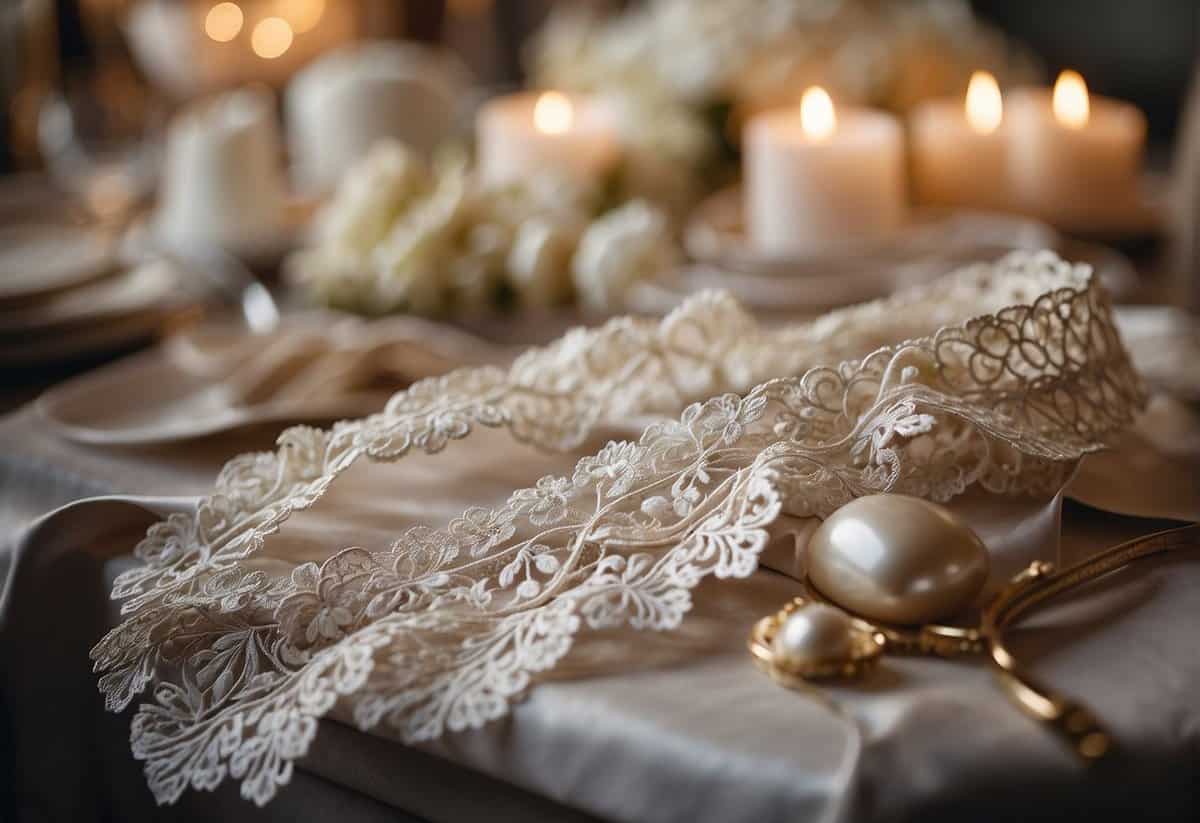
When choosing your bride’s garter, you want to ensure it complements your wedding dress and suits your personal style, while also maintaining comfort. Let’s explore how to select a garter that feels special to you and fits seamlessly with your bridal look.
Materials and Styles
Your garter should be a harmonious accessory to your bridal lingerie, both in material and style. Classic options include lace and satin, which can be beautifully detailed with beading, embroidery, or pearls. If you’re looking for a modern twist, consider materials like velvet or leather. The style of the garter can range from a simple band to an intricate garter belt complete with bows and trims.
Personalization and Themes
To make your garter uniquely yours, think about adding a personalized touch. Embroider your initials or wedding date, choose a garter that’s a heirloom piece, or match it to your wedding theme. For instance, a beach-themed wedding might inspire a garter adorned with small shells or starfish details, whereas a winter wedding might call for one with snowflake motifs.
Sizing and Comfort
The fit of your garter is critical for your comfort and to ensure it stays in place, just above your knee on your leg. Most garters come in standard size but can be adjusted or made to measure. When selecting your garter, consider your wedding dress and how the garter will feel throughout the event. It should be snug enough not to slip, yet not so tight as to cause discomfort or impede circulation.
Alternative Practices and Considerations
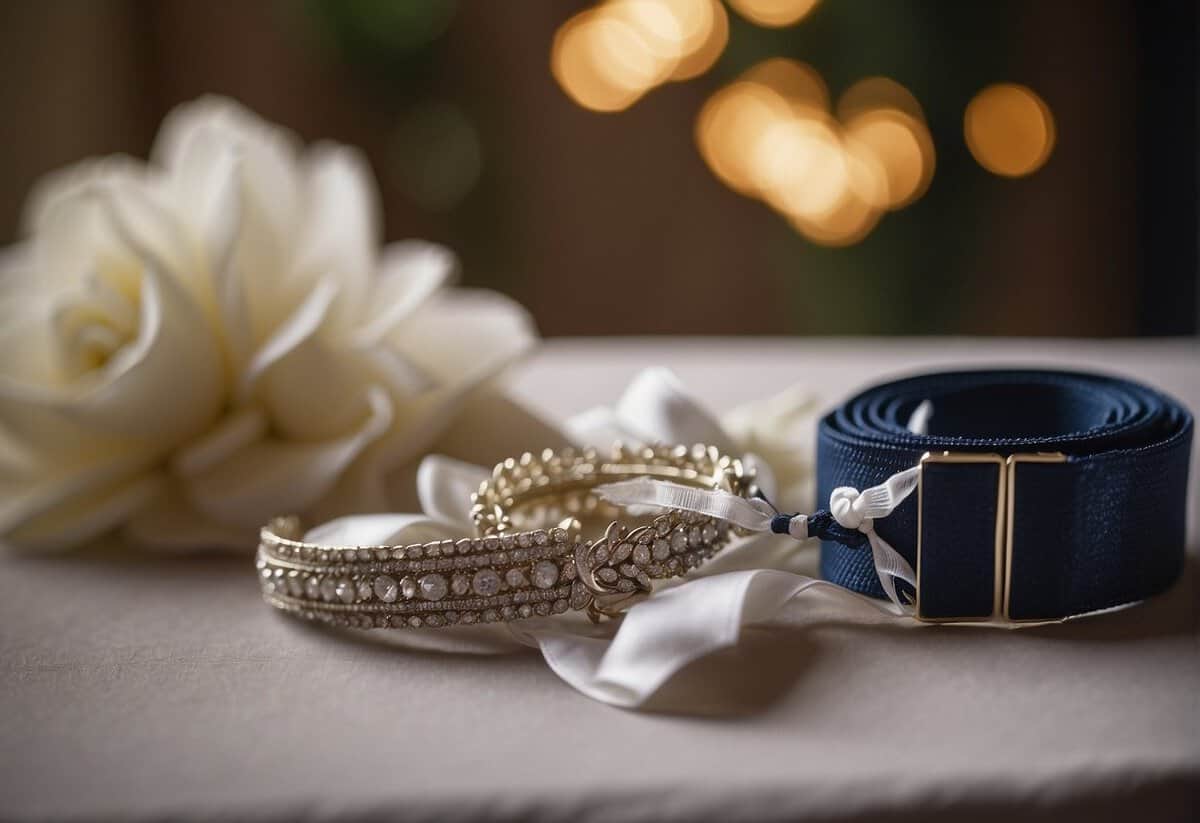
As times change, so do wedding traditions. If you’re looking to celebrate your nuptials but want to step away from certain customs, like the garter toss, know that there are plenty of contemporary alternatives that maintain the fun without sticking strictly to tradition.
Alternatives to the Garter Toss
In modern times, some couples have shifted away from the traditional garter toss at weddings, finding unique and personalized ways to involve their guests in the celebration. Alternatives like a “garter pass” — where the garter is handed from guest to guest — garner laughs and joy without putting anyone on the spot. Another option is to have a “charm pull” where guests pull charms connected to ribbons out of the wedding cake, with each charm symbolizing a different form of good luck or fortune.
Keeping the Tradition Alive
If you cherish wedding customs and want to keep the garter toss as part of your celebration, consider modernizing the approach. The garter itself can be a beautiful keepsake, ranging in price and style, from simple elastic bands to elaborate ones with blue appliqués, perfectly doubling as your “something blue.” This offers a way to honor the symbolism and excitement of catching the garter while making it a special memento for your bridal party or specific guests. You can also pair the garter with a bouquet toss or have a separate moment during the reception solely to acknowledge this tradition in a manner that feels true to you and your partner.
Frequently Asked Questions

Navigating wedding traditions can be tricky, but understanding them ensures you can make your special day uniquely yours. This section explores some common inquiries related to the wedding garter.
What’s the history behind the wedding garter tradition?
The wedding garter tradition has origins in medieval Europe, where it was believed that possessing a piece of the bride’s attire would bring good luck, leading guests to try to obtain a fragment by tearing it off. To avoid this, brides began tossing items to the crowd, including the garter.
Is it customary for the groom to remove the bride’s garter during the ceremony?
It’s custom for the groom to remove the bride’s garter during the reception, not the ceremony. This part of the celebration, known as the garter toss, is similar to the bouquet toss and typically involves the groom removing the garter and tossing it to unmarried male guests.
Are there alternative traditions to the garter toss at modern weddings?
Yes, many couples are now opting for alternative traditions to the garter toss, such as having a bouquet toss, or simply forgoing this part of the reception altogether. The emphasis is on personalization and comfort for everyone involved.
How has the perception of the garter toss changed over time?
Over time, the perception of the garter toss has shifted. Some see it as a fun staple of wedding receptions, while others view it as outdated or uncomfortable. Many couples now customize this tradition to better fit their values and guest dynamics.
Can a bride wear a garter without participating in the garter toss?
Certainly, a bride can choose to wear a garter as a special keepsake from their wedding without engaging in the garter toss. It’s entirely a personal preference and can be a treasured part of the bridal attire.
What are some thoughtful ways to incorporate a garter into the wedding ceremony?
A thoughtful way to incorporate a garter is by personalizing it with embroidery or choosing a design that has special meaning to you or your relationship. It can also be used as a symbol of something passed down through generations or be worn as a sentimental touch.


